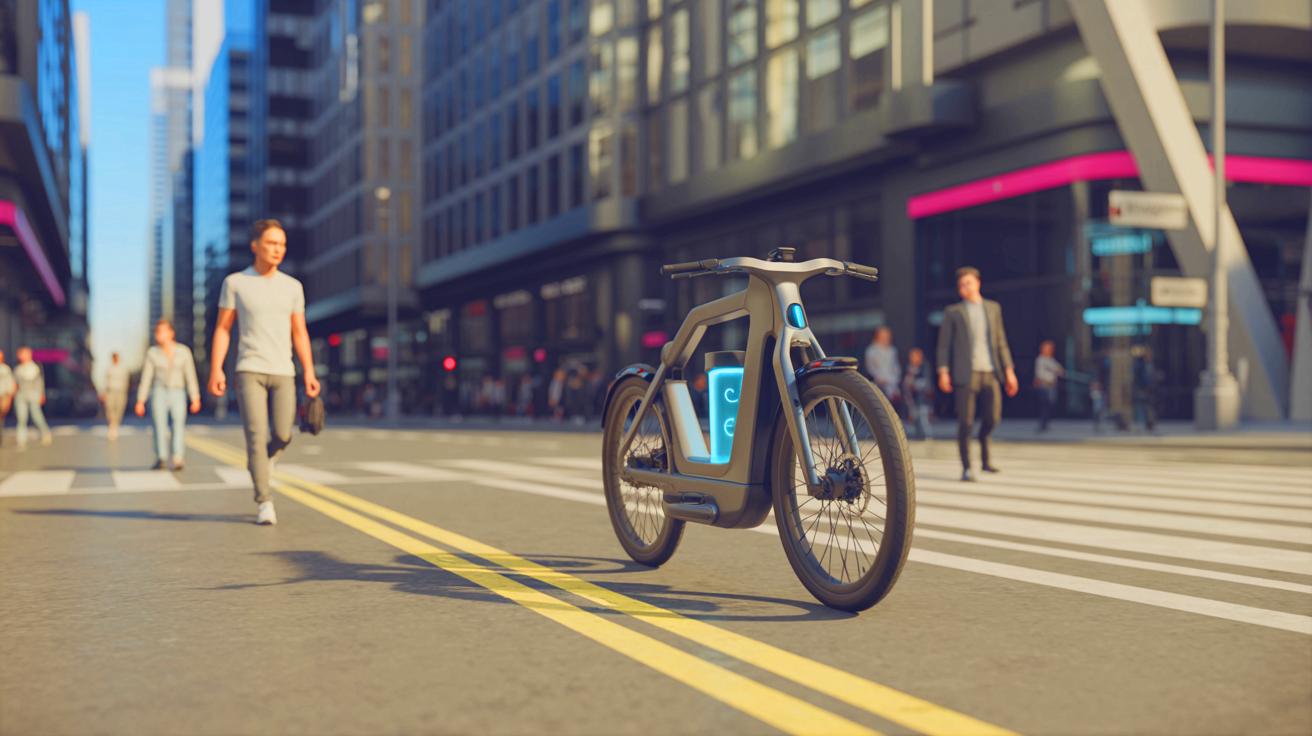| IN A NUTSHELL |
|
Urban mobility is undergoing a profound shift with the rise of new technologies that surpass traditional e-bikes. These innovations promise a more sustainable and efficient future for our daily commutes. With environmental concerns and technological advancements driving this change, cities across the globe are poised to embrace these emerging solutions, potentially transforming how we navigate urban landscapes. Let’s delve into the evolution of eco-friendly transportation and explore the technologies shaping its future.
The Evolution of Eco-Friendly Transportation
The advent of e-bikes marked a significant milestone in urban commuting history. Their practicality and reduced environmental impact compared to motor vehicles made them a popular choice in cities worldwide. However, despite their benefits, e-bikes have notable limitations that open the door to new alternatives. The reliance on lithium-ion batteries is a primary drawback. These batteries require considerable charging time and involve environmentally questionable production processes. The extraction of materials for these batteries leaves a notable carbon footprint, casting doubts on their overall eco-friendliness.
As clean energy technologies advance, some can complement transportation modes, such as solar panels that convert sunlight into electricity, providing a solution to power charging infrastructures. This evolution in energy solutions symbolizes a pivotal moment in the quest for sustainable urban mobility, paving the way for the integration of innovative technologies that promise to revolutionize the way we commute.
The Limitations of Electric-Assisted Bikes
Despite their popularity, e-bikes face several disadvantages impeding widespread adoption. These include:
- Limited range necessitating regular recharges
- High maintenance costs, especially for specialized repairs
- Greater weight than traditional bikes, complicating transport
- Batteries typically last around five years only
Replacing a battery is a significant investment, averaging around $530. This financial burden adds to the already high initial cost of these vehicles. The practicality of e-bikes is also questionable. When the battery completely discharges, the weight of the bike turns each ride into a physical challenge, contradicting the primary goal of facilitating urban commutes. These limitations underscore the need for more advanced solutions in urban mobility, pushing the industry to explore alternative technologies.
Hydrogen Bikes: The Revolution in Motion
The emergence of hydrogen bikes signifies a major leap forward in eco-friendly transportation. Unlike traditional e-bikes, these bikes use a fuel cell that directly converts hydrogen into electricity to power the motor. One of the standout benefits of this technology is the rapid refueling time. The Alpha Neo model, developed by Pragma Industries, a pioneering French company, recharges in just one minute, offering an impressive range of up to 93 miles.
The environmental impact of hydrogen bikes is significantly more favorable. They eliminate dependence on lithium-ion batteries, whose production and recycling present substantial ecological challenges. To further optimize the carbon footprint of these systems, hydrogen can be produced using renewable energy sources such as solar power. These hydrogen bikes are now available to the public, with purchase or monthly rental options. The Alpha Neo model is available for $6,000 or for rent starting at $85 per month with an initial deposit of $1,800.
| Characteristic | Electric Bike | Hydrogen Bike |
|---|---|---|
| Recharge Time | 3-6 hours | 1 minute |
| Average Range | 31-50 miles | 62-93 miles |
| Environmental Impact | Moderate (lithium batteries) | Low |
Future Perspectives for Urban Mobility
The introduction of hydrogen bikes marks the beginning of a new era in sustainable mobility. This technology could expand to other forms of transportation, creating a complete ecosystem of clean commutes in urban areas. Investment in hydrogen distribution infrastructure is gradually increasing across several European countries, facilitating the adoption of these new modes of transport. This trend aligns with a global desire to reduce the carbon footprint of daily commutes.
While e-bikes have paved the way, hydrogen bikes represent the next logical step towards a more efficient and eco-friendly means of transportation. As these advancements continue, the question arises: how will these emerging technologies further reshape the landscape of urban mobility in the coming years?
Our author used artificial intelligence to enhance this article.
Did you like it? 4.6/5 (26)





